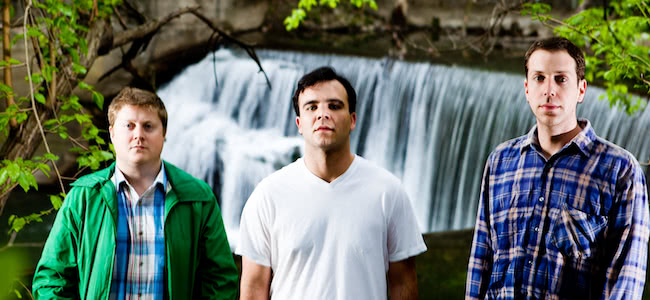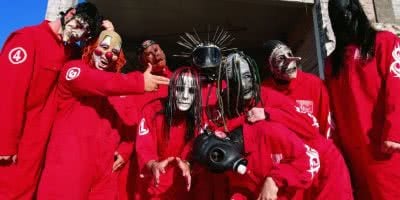Future Islands frontman Samuel T. Herring is a scary guy. Put him on a stage and he’ll stare you down with such ferocity that, coupled with quick synth riffs, it could very well be some absurd nightmare.
Herring’s passion though, is what makes a Future Islands gig so exciting, and this was no exception at their Wednesday night performance at the Northcote Social Club.
In support of the Baltimore trio was one-mand-band Rick Fights, otherwise known as I Heart Hiroshima frontman Matthew Somers.
With only his guitar and bushman beard to accompany him, Somers tamed the audience with slow country ballads filled with narratives of loss, hard luck and vulnerability – the kind of stuff that would make Nick Cave proud.
Rick Fights’ style has a sparse sound yet a profound impact, and is very much in vogue, with acts like Jack Ladder, Twerps and Dick Diver really embracing the Australiana sound. His aura of dejection and loneliness though was taken a little too far with his lack of self-belief: “This is new. I’ll probably f*** it up.”
Seeing as no sane concert-goer wants to be told they’re in for a crappy time, Somers would do well to have faith in his own talent – the hard proof of it was right there in the attentiveness of the early punters and the relaxed mood he created as the rest of the crowd filtered in.
In stark contrast came the excess and energy of the night’s headliners, Future Islands, fresh off the aeroplane and ready to roll.
While keyboardist Gerrit Welmers and guitarist William Cashion are seasoned and polished performers, it really couldn’t be a Future Islands set without the charisma of the theatrical and almost maniacal Samuel T. Herring.
He had the audience warmed up early on, speaking to them, drawing them in, and with a couple of quick dance tunes the crowd knew they were set up for a fun night.
It didn’t take long for Herring to be so consumed in the performance that he was literally pouring with sweat, clothes sticking to him, his face red and eyes bulging. This, it seems, is what extreme passion looks like.
It’s an interesting sound that Future Islands create: there’s a lighthearted, tropical overtone to many of their songs, yet Herring’s voice is so cutting, grunty and strained, even letting out the odd scream here and there.
After a while though, their songs can get repetitive. The introduction of an eclectic synth riff, the quick bass melody and then Herring’s vocal gymnastics. The group have quite the talent for creating a sense of momentum and build in their composition, but when you start to think that each song might be “Tinman,” you know something’s not working out quite right.
Even when things were getting a bit monotonous, just marvelling at Herring’s theatrics was enough to keep things entertaining. Jumping jacks, Elvis impersonations – Herring had it all.
Much to the audience’s delight, the group performed two encore songs. While a post-set return is always a highlight, in this case it showed that there is more to Future Islands than just quick synthed-up pop songs.
There was more tenderness, more light and shade (plus the added bonus of red lighting). It’s a shame that these kinds of moments didn’t happen earlier – interspersing the classic Future Islands tunes with changed-up beats, some more experimental instrumentals and more barren composition could have worked well.
A fast-paced and exciting performance, Future Islands really brought to life what they have laid down in their recordings, creating a real “show” that will always be sure value for entertainment.
– Chelsea McIver



































